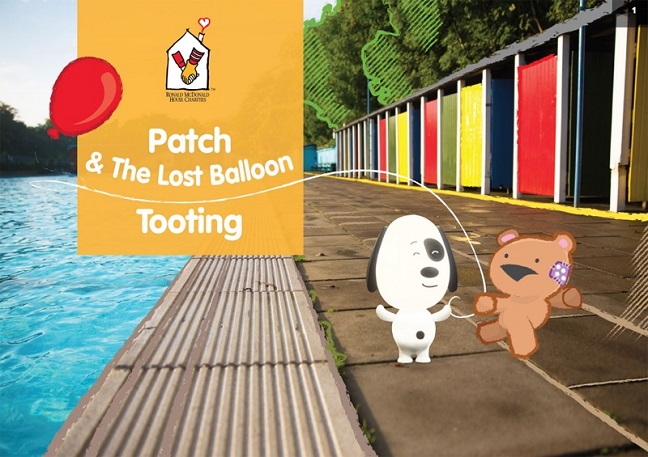
Ronald McDonald House Charities’ lead generation campaign generated 6,000 new supporters for the charity through opt-ins. Lauren Gotlieb explains how the charity’s collaborative approach helped create strong bonds with new and current supporters
If you’re trying to engage new audiences, an effective way to do this is to connect with them on things that interest them and that they can relate to. For Ronald McDonald House Charities, which provides free accommodation close to hospitals to allow families to stay near their seriously ill children, the target audience for our lead generation campaign was mums. We know that something most mothers can relate to is reading their children a bedtime story – and this is why we decided to develop our Patch the Night Light e-book series.
With the Night Light campaign, we wanted to highlight the fact that although reading a bedtime story is something most parents probably do with their children as a matter of course, when a child is in hospital, often far from home, that special storytime moment is not something a parent will take for granted – and our accommodation helps enable parents and children to still share that moment every night.
Creating a lead magnet, and collaborating with audiences
Story books are a tried and tested lead magnet; in our case they encouraged people to come over to our site and download the free stories and, while they were there, to get a sense of what our Ronald McDonald Houses are all about.
In themselves, the books we've created help bring our cause to life, as the stories centre around some of the things that families and their hospitalised children face every day, such as fear of being in hospital, lack of confidence, being sick, being separated – as well as the positives: making new friends, rallying together and helping others, for example.
To establish even deeper engagement, we crowdsourced elements of the stories and gave people the opportunity to suggest names for the characters, locations for the stories and more. We started off asking people to help name the lead character of the stories, as we wanted to get people excited about the campaign, and to have an interest in him and his story.
It was a very easy ask: people could suggest a name easily on social media using a hashtag, or via our website where they could share their email address if they wanted (with the incentive that they’d be entered into a prize draw to win an iPad). We had over 1,000 suggestions of names and some really lovely comments on our Facebook page.
Building momentum, and success with ‘opt-ins’
Involving our audience in the creative process made them feel they were part of our story, and invested in its outcome. This helped build momentum in the lead-up to the book launch. We had some great engagements and interactions with people across social, and in total we saw a 57% increase in web traffic, reached 6.5 million people across social media, and a further 6.6 million via our PR coverage (mostly offline) during the campaign.
Our main aim with all of this was to gather the names and contact details of people who are genuinely interested in the cause. We did this primarily by asking people, throughout all our calls to action whether that was to download a book or suggest a name or suggest content for the books, to ‘opt in’ to communications. We had 1,600 people share their email addresses with us. We were also able to drive more people to our Facebook page; as a direct result of the campaign we had around an extra 4,000 fans on Facebook.
Marketing for the e-books was supported not just by social media activity, but also by contacting the press and bloggers and using targeted adverts. We found Facebook lead generation ads to be absolutely fantastic: we were able to re-target users who had seen our previous Facebook ads with our new lead generation ads. These enabled users to easily subscribe to communications from us, without ever having to leave Facebook. That accounted for over 50% of our sign-ups.
It's worth noting that crowdsourcing isn’t necessarily only a digital activity. With the Night Light campaign, we took the crowdsourcing element offline to build engagement on a local community level. Our teams in our Ronald McDonald Houses throughout the UK went out and spoke with local businesses, and presented them with the opportunity to feature in the book and the story. For example, the setting for the Oxford storybook is Blenheim Palace, and this enabled us to engage with the organisation, discuss opportunities for cross-promotion, and establish a good relationship with them.
The importance of having a stewardship plan
In the end, we gathered approximately 6,000 new contacts, which exceeded our goals. To have a qualified list of email addresses of people who are genuinely interested in the cause is very valuable.
However, this is just the first step; our mission now is to steward them along the journey to ultimately become donors. We know that people’s interest will quickly wane if you don’t actively communicate with them on subjects that they’re genuinely interested in, and so we will continue to use social media to engage in meaningful dialogue with our new supporters. This, combined with the monthly e-newsletter they are receiving, gives us an opportunity to understand what content they like and what subjects they want to find out more about.
This was the first time we've run a lead generation campaign; we've historically focused on pure brand awareness. We've gained so much insight and will use these learnings to engage with more potential supporters in 2016. But making our new donors feel appreciated is our number one priority.
Lauren Gotlieb is marketing and communications manager for Ronald McDonald House Charities




